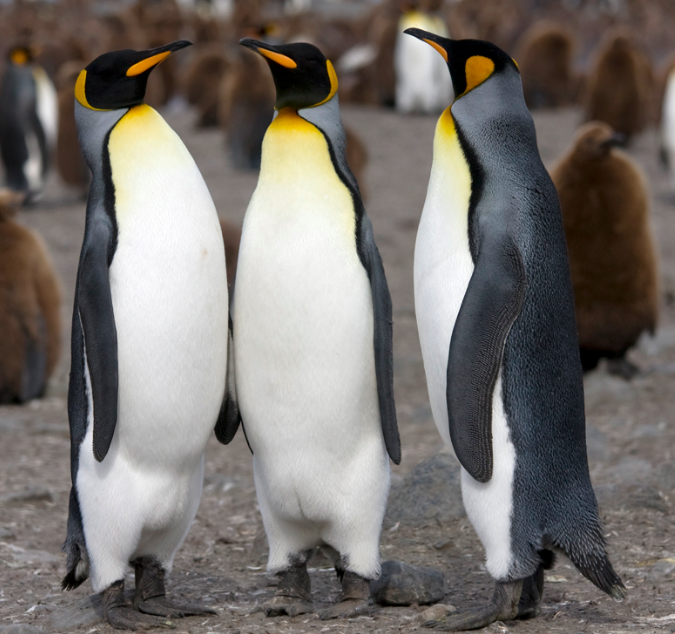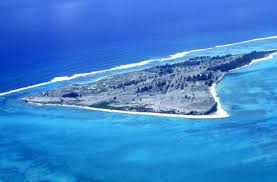Mwalimu-G
Elder Lister
WHY PENGUINS ARE A LAUGHING MATTER
OCTOBER 19, 2020 DAN LEWIS UNCATEGORIZED 0

At heights reaching more than three feet (100 cm) and weights approaching 40 pounds (18 kg), king penguins like the one pictured above can be the size of small human children. Native to the islands around Antarctica, they’re rather protected — with well more than 2 million king penguins in the region, they are as far from being an endangered species as one can get, climate change notwithstanding. As a result, you’ll find king penguins in zoos and aquariums around the world; they’re considered a “flagship species” when it comes to choosing animals to highlight the planet’s biodiversity to the public.
So it shouldn’t be surprising that king penguins are also some of the most studied creatures on the planet. And sometimes, that can lead to some unexpected laughs.
Because of their poops.
Like most wild animals, king penguins don’t build or otherwise use bathrooms. They go wherever they want, whenever they want, and do so indiscriminately. And that’s not a bad thing! Bird excrement, also known as guano, is “is a highly effective fertilizer due to its exceptionally high content of nitrogen, phosphate, and potassium: key nutrients essential for plant growth,” as Wikipedia summarizes. When king penguins go for a swim to catch themselves a meal, they’re unintentionally bringing back a lot of the nutrients needed for vegetation to thrive back on land.
Unfortunately, there’s a downside to penguin poo — it may have a negative impact on climate change. Earlier in 2020, a team of researchers from the University of Denmark went to South Georgia, an island in the South Atlantic near Antarctica. (Here’s a map.) What they discovered was bad for the planet. Newsweek explains:
Nitrous oxide isn’t just a greenhouse gas; it is also known as “laughing gas,” and works as a sedative, one often used by dentists to make unpleasantries like cavity fillings and root canals tolerable. And the amount of N2O was so extreme on South Georgia that, per CNN, “one researcher went ‘completely cuckoo,’ while ‘nosing about in guano for several hours,’ in the words of Bo Elberling, a fellow researcher. The nitrous oxide exposure was so intense that it went beyond being an analgesic; as Elberling told Phys.org, those on his team began “to feel ill and get a headache” after the delusional happiness wore off.
But there’s good news. First, the researchers don’t seem to be harmed, at least not long term. And second, neither does the planet. Per Elberling, “nitrous oxide emissions in this case are not enough to impact Earth’s overall energy budget.”
The full paper is available here.
Bonus fact: Dentists have been using N2O as an analgesic since the 1840s, but it didn’t start off that way. Nitrous oxide was first discovered in 1793 and, before the century was out, became a very popular recreational drug for the European elites. “Laughing gas parties” were common as early as 1799; it wasn’t until 1844 when a dentist named Horace Wells, after seeing a demonstration of the intoxicating effects of the gas, decided to try it as a form of anesthesia.
From the Archives: How Bird Poop Shaped Our Maps: Guano!
OCTOBER 19, 2020 DAN LEWIS UNCATEGORIZED 0

At heights reaching more than three feet (100 cm) and weights approaching 40 pounds (18 kg), king penguins like the one pictured above can be the size of small human children. Native to the islands around Antarctica, they’re rather protected — with well more than 2 million king penguins in the region, they are as far from being an endangered species as one can get, climate change notwithstanding. As a result, you’ll find king penguins in zoos and aquariums around the world; they’re considered a “flagship species” when it comes to choosing animals to highlight the planet’s biodiversity to the public.
So it shouldn’t be surprising that king penguins are also some of the most studied creatures on the planet. And sometimes, that can lead to some unexpected laughs.
Because of their poops.
Like most wild animals, king penguins don’t build or otherwise use bathrooms. They go wherever they want, whenever they want, and do so indiscriminately. And that’s not a bad thing! Bird excrement, also known as guano, is “is a highly effective fertilizer due to its exceptionally high content of nitrogen, phosphate, and potassium: key nutrients essential for plant growth,” as Wikipedia summarizes. When king penguins go for a swim to catch themselves a meal, they’re unintentionally bringing back a lot of the nutrients needed for vegetation to thrive back on land.
Unfortunately, there’s a downside to penguin poo — it may have a negative impact on climate change. Earlier in 2020, a team of researchers from the University of Denmark went to South Georgia, an island in the South Atlantic near Antarctica. (Here’s a map.) What they discovered was bad for the planet. Newsweek explains:
As CNN reported, “the emissions measure about 100 times more than a recently fertilized Danish field.” That’s a lot, and it’s no laughing matter — but the researchers had a hard time keeping a straight face.Penguin feces, known as guano, is known to release huge amounts of nitrous oxide (N2O). This is a potent greenhouse gas, with a warming effect around 300 times that of carbon dioxide (CO2). The N2O is created when the penguins eat fish and krill that have absorbed large amounts of nitrogen via phytoplankton. Nitrogen is released from the guano, and the soil it lands on converts it into N2O.
Nitrous oxide isn’t just a greenhouse gas; it is also known as “laughing gas,” and works as a sedative, one often used by dentists to make unpleasantries like cavity fillings and root canals tolerable. And the amount of N2O was so extreme on South Georgia that, per CNN, “one researcher went ‘completely cuckoo,’ while ‘nosing about in guano for several hours,’ in the words of Bo Elberling, a fellow researcher. The nitrous oxide exposure was so intense that it went beyond being an analgesic; as Elberling told Phys.org, those on his team began “to feel ill and get a headache” after the delusional happiness wore off.
But there’s good news. First, the researchers don’t seem to be harmed, at least not long term. And second, neither does the planet. Per Elberling, “nitrous oxide emissions in this case are not enough to impact Earth’s overall energy budget.”
The full paper is available here.
Bonus fact: Dentists have been using N2O as an analgesic since the 1840s, but it didn’t start off that way. Nitrous oxide was first discovered in 1793 and, before the century was out, became a very popular recreational drug for the European elites. “Laughing gas parties” were common as early as 1799; it wasn’t until 1844 when a dentist named Horace Wells, after seeing a demonstration of the intoxicating effects of the gas, decided to try it as a form of anesthesia.
From the Archives: How Bird Poop Shaped Our Maps: Guano!

